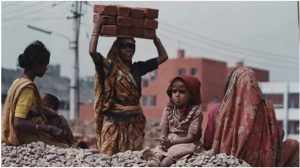But it also raises several legal, procedural, and logistical questions: What legal provisions govern the inclusion of caste in the Census? Which list of OBCs will be used? How much preparation is needed before enumeration can begin? And what challenges—both during the data collection and after the publication of results—could lie ahead?

Legal requirements for caste enumeration
To include caste enumeration in the next Census, the government does not need to amend the Census Act. The Registrar General and Census Commissioner (RG&CC) is already empowered under existing law to design the census proforma — the standardised forms used during the house listing and population enumeration phases to collect information from households and individuals, respectively.
While finalising the questions for the second phase (population enumeration), the RG&CC can simply add a question that goes beyond the existing categories of General, Scheduled Castes (SC), and Scheduled Tribes (ST) to ask whether a person belongs to the Other Backward Classes (OBC), and if so, which specific class within that category. This addition would have to be included in the final proforma, which is notified through a formal gazette notification. “So, an amendment to the Act to include caste as a data collection point is not a prerequisite,” said a former officer associated with census work.
Which list will be used for OBC enumeration?
The most crucial question the government must now address — and one that will ultimately be a political call, much like the decision to enumerate caste itself — is which list to use while enumerating OBCs.
In the last Census, for SCs and STs, the proforma relied on the official lists notified under the Constitution (Scheduled Castes) Order, 1950, and the Constitution (Scheduled Tribes) Order, 1950. These lists — currently comprising 1,170 castes under SC and 890 communities under ST — are periodically updated through amendments passed by Parliament.
However, for OBCs, there is no single, consolidated list. A central list maintained by the National Commission for Backward Classes (NCBC) is used for reservations in central government jobs and educational institutions. Separately, each state maintains its own OBC list, which often differs from the central list — and in many cases, includes many more communities.
Story continues below this ad
The key decision now before the government is whether to rely solely on the central list, which currently includes 2,650 communities, or to merge it with the various state lists, thereby significantly expanding the scope of enumeration. Either way, the choice is likely to be politically sensitive.
Preparation timeline
So, how much time will the RG&CC’s office need to prepare for the enumeration, given the addition of caste data?
The process is expected to mirror the preparation undertaken ahead of the 2020 Census, which was suspended due to the Covid-19 pandemic. Taken together, and by conservative estimates, the government will need at least six months of preparation before it can begin enumeration.
The first step is for the Central government to issue a notification in the Official Gazette declaring its intent to conduct a Census. This must then be followed by similar notifications from all state governments — a process that could take up to two months. Once these are in place, the proforma for the house listing and population enumeration phases will have to be formally notified.
Story continues below this ad
The original 2021 Census was set to be the first to use digital enumeration, with enumerators collecting data via an electronic form rather than pen and paper. With the inclusion of caste data, the software will now need to be updated to include a new field for OBCs, along with a drop-down menu of sub-categories.
Enumerators will also need to be retrained, especially since many of those identified for the postponed 2020 exercise may have moved on or retired. Training alone typically takes up to two months. In addition, the RG&CC’s office will need to conduct a pilot exercise — like the one conducted prior to 2020 — to ensure there are no glitches in the updated software.
“Unlike past Censuses, this time around, nearly 80% of the work will have to be done during the preparation phase, and only 20% after data collection,” said a former officer. “The adoption of technology will significantly reduce the manual effort required to tabulate data, which earlier took months—sometimes years.”
Challenges ahead
The challenges now facing the government are both political and procedural.
Story continues below this ad
On the ground, enumerators may face difficulties with new technology, but these can be addressed through proper training and rigorous piloting. However, a far bigger concern is the environment in which this Census will be conducted.
“What we often overlook is that this Census is happening in an era of rampant misinformation, which can spread within minutes—especially through platforms like WhatsApp,” said a former officer. “There’s little an enumerator can do in the face of a viral message falsely claiming they are fraudsters collecting personal data. This could seriously undermine the enumeration process. The only way to counter it is through robust public outreach and awareness campaigns.”
On the political front, the first decision is which list to use for OBC enumeration. But the far more consequential challenge will emerge after the data is published. Until now, reservation policies have relied on projections and estimates from the last caste census in 1931. The upcoming Census will offer the first accurate estimate of India’s caste composition in nearly a century. This data is expected to prompt demands for recalibrating reservation quotas in proportion to the actual OBC population—and could even fuel calls to lift the 51% cap on total reservations, set by the Supreme Court.








































